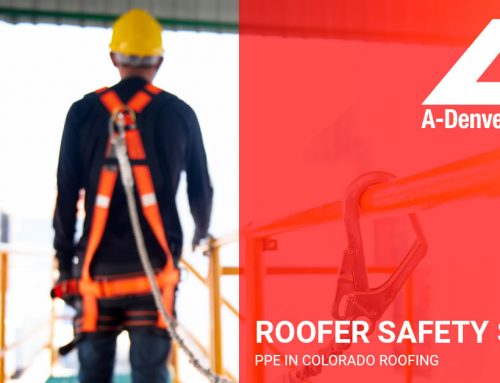Fire prevention is extremely important in the roofing trade. We work with highly flammable chemicals and electricity that can cause fires on a roof. These following tips and techniques will help to keep you safe when roofing in Denver, and Colorado Springs.
The fire tetrahedron is a four-sided geometric representation of the elements of fire that illustrates the connection between fuel, heat and oxygen through a chemical reaction. Fire is not a state of matter. Fire is a chemical reaction that is sustained only as long as all three necessary elements are present. This is important to know so that when you need to put out a fire, you can make the best decision as to how to put it out.
Fire Prevention requires Roofing Employers to:
• Provide adequate fire protection equipment on the roof and alert systems for crew-members that comply with OSHA regulations.
• Have firefighting equipment conspicuously located on the roof, near the kettle, and inspected on a regular basis.
• Have fire extinguishers placed on construction sites not more than 100 ft. from any given point. There should be at least one extinguisher present for every 3,000 sq. ft. of roof space.
• Have an established fire alarm system, such as an overhead sprinkler system.
• Be conscious of potential ignition hazards from electrical wiring, exhaust on internal combustion engines or smoking.
When storing hazardous material outside on the roof:
• The area must be equipped with proper firefighting equipment.
• The area should be kept clear and free of debris.
When storing hazardous material inside a building during a re-roofing project:
• Incompatible materials must be kept separate.
• Proper clearance must be allowed for ceilings, doors and pathways.
Remember: When using material and equipment in the workplace that pose potential fire hazards, such as flammable and combustible liquids, LP-Gas and temporary heating devices, care must be taken in regards to safe use and storage.






